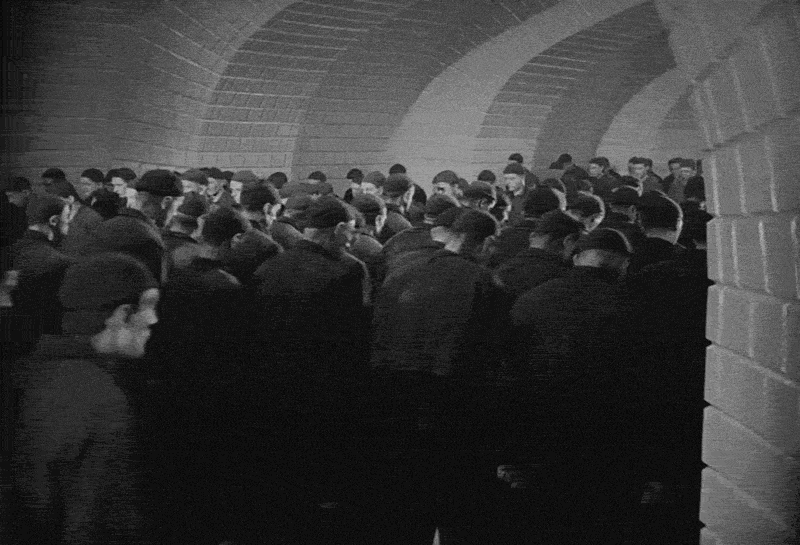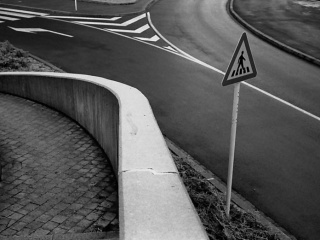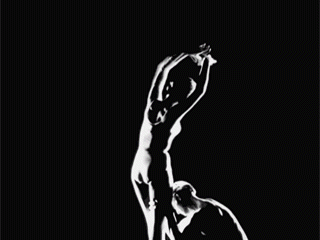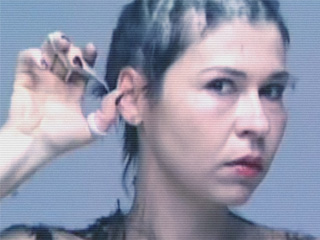Appropriation and remix
The ethics and ecology of photographic recycling
In Postproduction, I try to show that artists' intuitive relationship with art history is now going beyond what we call "the art of appropriation," which naturally infers an ideology of ownership, and moving toward a culture of the use of forms, a culture of constant activity of signs based on a collective ideal: sharing. —Nicolas Bourriaud.

Scene of the film Metropolis by Fritz Lang, 1927.
For some time now, the resource of appropriation in photography has gone from being a subversive and provocative act to being, in many cases, the catch phrase which seeks to associate the prestige of previous artworks and contexts with fresh projects. The very concept of appropriation assumes the possibility of appropriating a material aspect of an image which is becoming more and more intangible. Due to the increasing production, consumption and transformation of images in a digital format, there is now an infinite number of possible reincarnations of not only every photograph, but also of its copies and variants, and of other photographs which it references, parodies or recreates. This never-ending cascade of repetitions and similarities has rendered unnecessary any fight against the concepts of originality and authorship, which only a few decades ago, it seemed essential to question. Originality, at risk of showing itself up with touching naivety, has not evolved from being a different arrangement of very well-known elements. Similarly, authorship hardly ends up as the top hat from which, like a rabbit, a well-edited design made up of materials uploaded from almost indistinguishable references will appear. In such a scenario, what does artwork openly based on somebody else’s material suggest? What question does it raise and what answer does it provide? Or, ideally, what question would it raise and what answer would it give so as not to remain merely a superficial resource?
The first step in formulating a response is to recognize that the boundaries of this practice are imprecise. It is impossible to define the point at which the reinterpretation of archived material or their intervention turns into a practice of visual recycling and rewriting of its meaning. If we add to this catalogue of practices, collages and photo montages, as well as the found footage and the capture of three- dimensional representations (for example, Street View or Apple Maps), then the territory becomes immeasurable. However, perhaps it is this complexity itself that is the first supporting point: a project that is constructed from a remix does not conceal its debt to other sources, and instead demonstrates its aim of proposing a new interpretation of them, albeit in a modest way. This in itself highlights an ethical concern with respect to the rule of images. Here lies a commitment to not only inviting a reflective way of looking at a universe that already exists but also a desire to add meaning to this universe. This leads us to the following conclusion: a project of this kind calls for contextual boundaries to be fixed. In order to create a new meaning it is fundamental to acknowledge previous meanings and references. Whether this is achieved by means of footnotes, marginal notes or definition by the micro universe itself regarding the selection and shots it comprises, or even the sum of a variety of these resources, the result is always one step further away from the original sources.
Finally, making the effort to acknowledge the fact that an image derives from previous artwork and that it aspires to become part of a context allows us to deduce a final characteristic of these designs, a characteristic that we can call the ecology of photographic recycling. In a world in which images are created at an extraordinary pace and in which every image can be disposable, appropriation acknowledges that images can take on new meanings and be enriched by broader meanings. The unstoppable avalanche of production comes face to face with the reasoned observation of reproduction and the modest judgment of post-production. The decreasing value of originality counters analysis, and the curator’s panoramic vision opposes the author’s perspective.
If we admit that in between the practices of appropriation and remix lies a need for ethics and ecology, which themselves require individual assessment and research, perhaps we can better measure the current relevance of the latest designs and recognize the scope of each one. If we accept that this new economy of shared property adds as much economic value as it does symbolic value, perhaps we will then have more factors related to our notions about intellectual property to adjust to a more progressive framework. The questions from the photographic world - in which there is so much to see and so much to understand - are timely and certainly worth acknowledging. Are we capable of doing so?
 Alejandro Malo (Mexico, 1972). Lives and works in Mexico and is the director of ZoneZero. Since 1993, he has taken part in various cultural projects and worked as an information technology consultant. He has collaborated in print and electronic publications, and given workshops and conferences on literature, creative writing, storytelling and technology. In 2009, Malo joined the team of the Fundación Pedro Meyer, where he directs the Archives and Technology departments.
Alejandro Malo (Mexico, 1972). Lives and works in Mexico and is the director of ZoneZero. Since 1993, he has taken part in various cultural projects and worked as an information technology consultant. He has collaborated in print and electronic publications, and given workshops and conferences on literature, creative writing, storytelling and technology. In 2009, Malo joined the team of the Fundación Pedro Meyer, where he directs the Archives and Technology departments.





